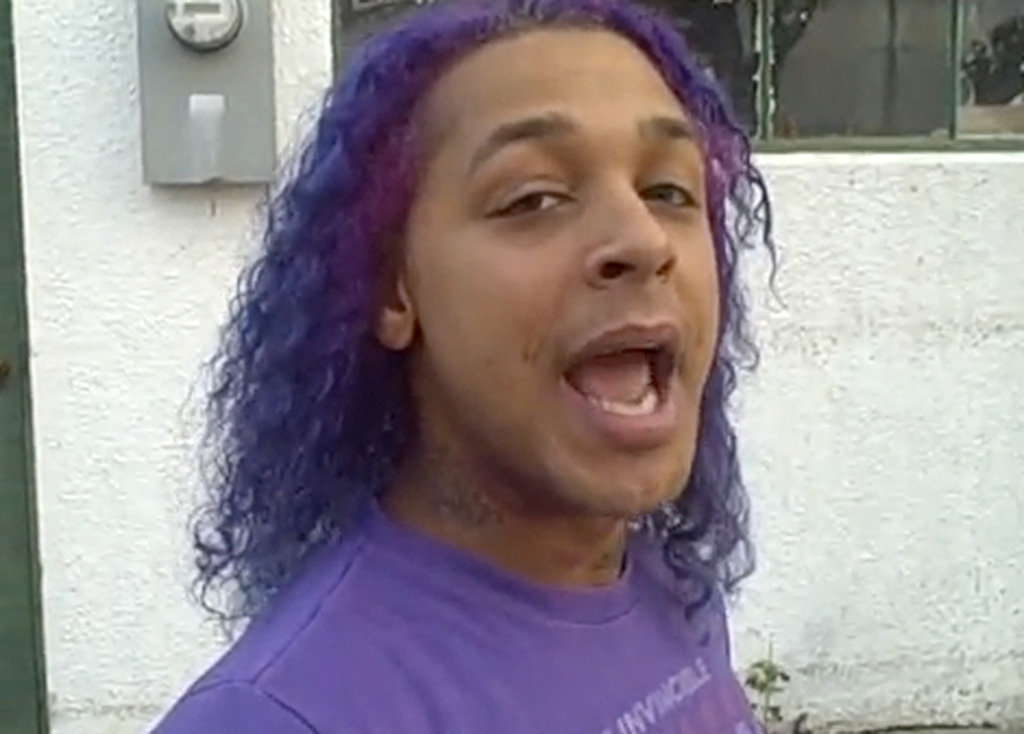This week Beyoncé released “Formation” — a track (and video) that spoke to the Black Lives Matter movement, the governmental response to Hurricane Katrina, the politics of black women’s hair, family history, and her own fractured relationship with the American South. You’d be hard pressed to find a pop song that’s said so much in just 4.52 minutes.
Before Bey takes her place on top of a submerged cop car — and in music history — we hear a voice ask: “What happened at the New Orleans?” In one line we’re introduced to a central theme in the conversation Beyoncé is about to start, but also to Messy Mya — a YouTube personality who was murdered in 2010.
Before his death, the New Orleans rapper and comedian was know for his “fluorescent hair shades and caustic barbs.” His popular YouTube channel hosted clips of him savagely, and often pretty funnily, joking about people who lived in his neighborhood and the violence that permeated the area. Among the laughs are also several more unsettling posts. In one clip he hints his death is probably imminent, noting that young men in New Orleans don’t have long life expectancies. The day before his murder, he posted on Facebook about a friend who had recently died saying, “I’ll be there soon.”
By the time Messy was 22, his videos were clocking tens of thousands of views. Even before it was sampled by Bey, his post addressing the government’s response to Hurricane Katrina had assured his place in internet history. Before he appeared on “Formation,” the image of his purple hair and shirt was familiar all over New Orleans. Today, the clip has over 1.7 million views, although that number’s been affected by recent attention.
Unsurprisingly, Messy wasn’t always popular. His take-downs offended a lot of people, and he knew it. His catchphrase became, “Now who gonna pop me?” Tragically, on November 14, 2010, Messy was shot when leaving the baby shower of his unborn son. In an eerie reflection of his online fame, news of his death also broke digitally when a photo of his body at the crime scene began circulating online. Immediately after his murder was confirmed, local radio hosts began talking about his importance and soon he was trending on Twitter.
A week later, then 24-year-old Jason Hamilton was arrested for the shooting. Despite initially confessing and spending three years behind bars, charges against Hamilton were dropped when evidence emerged that proved he wasn’t present at the scene when the shooting occurred. His lawyer later explained his client had bipolar disorder and was not taking his medication when he confessed.
Six years after his death, it’s impossible to speculate whether Messy’s profile would have continued to grow had he lived. Sure his monologues are often scattered, but Messy’s presence and charisma is undeniable. He was clearly a significant figure in his community, online and in larger New Orleans before his passing, and it’s not hard to imagine a future where his audience would have continued to expand.
At the time ,Messy’s case was covered widely, but in the years following his death faded from view. That was until Beyoncé made sure he’d be eternally tied to her work. The inclusion of the sample doesn’t only pay homage to a piece of local culture, but serves as a reminder that Messy’s life and murder, and the following trial continue to represent the city’s ongoing battle with crime and violence.
Credits
Text Wendy Syfret
Image via YouTube
